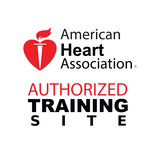Understanding fibrillation and how to stop such nonsense

What Makes Your Heart Spark?

The reason your heart beats properly is due to a beautiful design and perfect timing. Imagine you could design a spark plug with a built in timer that emits an electrical spark at a set rate. Let's say this plug's timer is set for one second. So every second, this spark plug will emit a spark unless another plug nearby does so first. If a neighboring plug sparks first, the original spark plug will simply carry the electrical impulse to the next plug and restart it's own timer. We'll call the spark plug with the shortest timer, the "pacemaker."
Now let's take those spark plugs and place them in the heart muscle so that the plugs at the bottom of the heart have a longer timer than the ones at the top. The "pacemaker" will be positioned at the top of the heart. This means that, under normal operation, an electrical signal will travel every second from the top of the heart to the bottom and then reset so the process can be repeated. This is the cycle the causes the muscle fibers of the heart to contract and pump blood through the organ in an organized and effective manner. This particular scenario would cause a heart rate of 60 beats per minute.
Fibrillation: Too Many Pacemakers
Due to various reasons, multiple spark plugs may begin "firing" at irregular and uncoordinated intervals. This lack of a single pacemaker causes what is known as "fibrillation." Fibrillation is the muscular quivering that occurs due to this disorganized electrical rhythm. When only the top chambers of the heart are affected, this is known as atrial fibrillation or A-Fib. A-Fib is a common condition that can be treated through diet, medication or surgery. When both the top and bottom of the heart are affected, this is known as ventricular fibrillation. During ventricular fibrillation, the heart muscle will nervously twitch, but will not effectively pump blood to the body and other vital organs. If the heart remains in ventricular fibrillation, the electrical charge coming from each of the spark plugs or "nodes" will decrease until no electrical current remains.
Bring In The Defibrillator

The objective of defibrillation is to break through the electrical "noise" and re-establish a primary pacemaker for the heart. Defibrillation can be performed manually by a trained healthcare provider, or it can be performed automatically when a bystander uses an automated external defibrillator or AED. Once fibrillation has been identified, the defibrillator can deliver a series of electrical shocks over a very short amount of time. These shocks can effectively "reset" all of the the pacemakers in the heart so that a single "spark plug" or "node" can resume the role of the primary pacemaker. This results in the reestablishment of an organized heart rhythm. If the heart muscle is healthy enough once the organized rhythm is reestablished, the heart will begin to once again pump life-giving blood.
Keep Calm and Defibrillate
Nearly everyone is capable of delivering a life-saving defibrillation shock if the situation presents itself. You do not have to be trained in order to use an AED since the device will carefully lead you through the necessary steps once you turn it on. It is important to note, however, that the quicker we are able to defibrillate, the better the odds are that the heart will respond positively. We encourage you to become familiar with AED use through a CPR class, or at minimum by reviewing the basic steps to using an AED. Staying calm and understanding the basics of AED use can help you restart the heart much sooner, thereby increasing the odds of saving someone's life.

About the Author:
Randy Boone is the founder of CarePoint Resources in addition to serving his community as a Fire Department Paramedic and Apparatus Operator. Randy and the CarePoint team of educators work to equip the workforce and public with lifesaving skills and information through CPR training and certification. www.carepointresources.com



